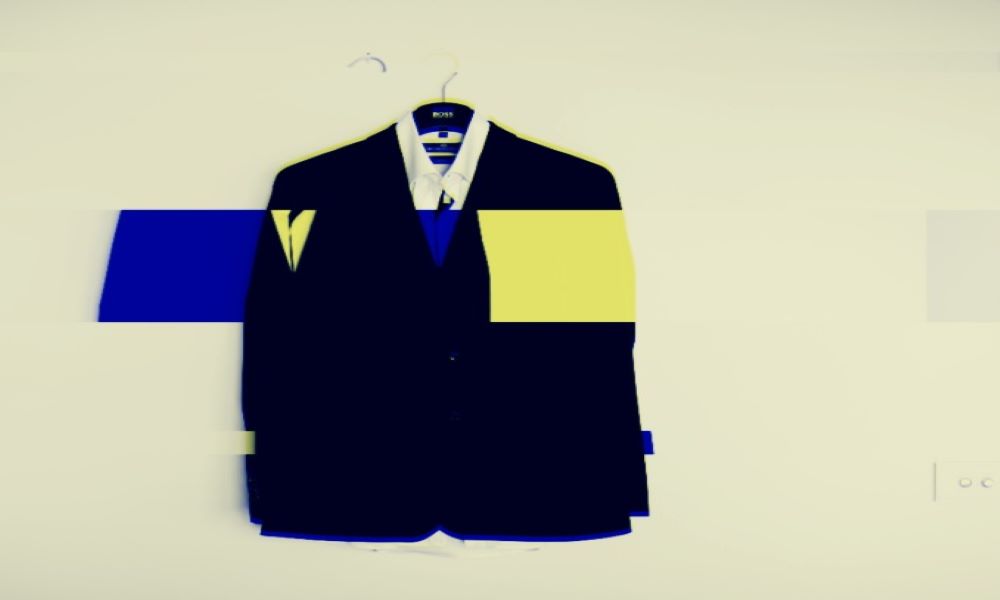
In this post, Dr Ben Marder, a Lecturer in Marketing at the University of Edinburgh Business school, along with PhD student Sebastian Oliver, share their findings of a study that explores the effects of dress-code on remote teaching.
It’s three months into lockdown and I sit here asking myself;
When was the last time I wore a pair of trousers that were not intended for anything other than exercise or lounging about?
It seems I’m not alone in this sentiment. Online clothing shopping has boomed during the COVID19 pandemic; however, demand has notably shifted away from work-centric attire to home-wear, which is highlighted in the recent BBC article titled “I returned my suits and spent £100 on joggers.” Referring back to ‘normal’ times, majority of academics dress relatively smart when entering the workplace, morphing into comfy-wear beings as soon as they get home. However, with this abrupt paradigm shift towards online teaching and virtual classrooms, boundaries between work and home have become indisputably blurred. Personally, it feels quite odd to be sat teaching online in a shirt and tie in my living room, with family photos on the wall and the dog happily chewing away on a fluffy chipmunk in the background. This new ‘Zoom Era’ raises a plethora of questions for us teachers. We aim to shed some light on one question that has been on our minds: how should I dress when teaching online?
We, the co-authors of this blog, have run four studies examining student perceptions of the way their teachers dress over the past year. This is important, as recent meta-research shows that teaching evaluations (and thus, university rankings) are chiefly determined by student perceptions of their instructors. Over the studies, we have confirmed that dressing more informally increases perceptions of warmth, while decreasing perceptions of competence. Whereas the opposite impact on perceptions holds true when a teacher chooses more formal attire. Warmth and competence were both positively associated with evaluations of teacher’s feedback quality and their ability to influence student decision making. With lockdown upon us, we wanted to see if our general findings held true in online teaching environments. This curiosity led us to run one more study. We created two videos of a lecturer introducing a generic business course, recorded in their home. Each video was completely identical apart from that in one video, the lecturer was dressed informally (white t-shirt and black hoodie), while in the other video the same lecturer was dressed formally (white shirt, black tie, and black suit jacket). In the background of the videos was a bookshelf.
The results from a sample of approximately 220 current university students suggest that how one dresses in online teaching is perceived differently to our prior findings on offline teaching. Specifically, first, dressing formally does not reduce warmth, and the rise in competence perceptions (while still statistically significant) is much less than before. It seems that when you are teaching from home, you are inherently perceived as more warm, likely as students are able to get a glimpse into the more personal side of their teacher’s lives. This is opposed to lecture theatres, which let’s be honest, are rather cold and sterile environments, which when coupled with very formal attire does not project warmth and approachability. Our results do point that dressing more formally can make you look competent, but this effect is modest to say the least and must be balanced with comfort.
Our conclusion is that how formally/informally you decide to dress when teaching online doesn’t really matter. Of course, there are most likely limits to our general conclusion (please don’t wear a bikini/mankini when lecturing online). From a broader perspective, we welcome the suggestion that teaching from home is perceived as warm by students, a small comfort as we grieve the loss of the pleasures of in-person teaching. Though we are confident in our ‘wear what you want’ advice during the pandemic, we are cautious to extend this outside of COVID times, as a potential explanations of why formal dress was still perceived as warm may be due to general positive feelings that ‘we are all in this together’. What we think is important to consider, when it comes to impression formation in online teaching is the backgrounds; white screens, bookshelves, gardens, or photos of our work offices. No doubt the setting we present ourselves in has an impact on our student’s impressions of us – something we look forward to doing some more research on.



